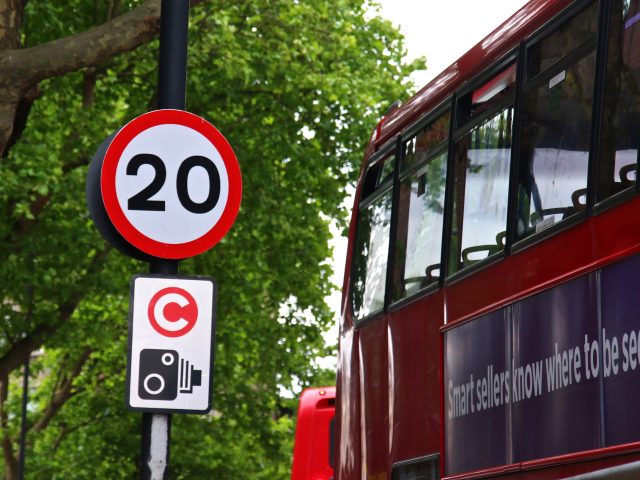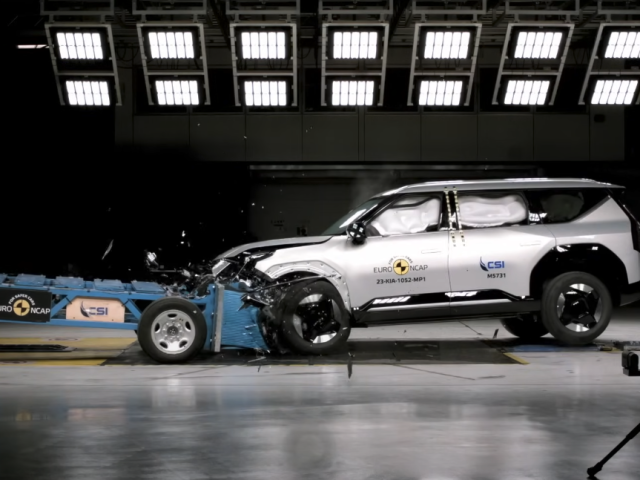Europe must boost safety for cyclists and walkers
- 138,400 pedestrians and cyclists killed in road traffic over twelve years
- EU set to review motor vehicle safety rules: campaigners call for new safety technologies to be fitted as standard – pedestrian protection tests for new cars should be upgraded and extended to protection for cyclists
- EU member states should implement 30 km/h zones in residential areas
7,600 people died in road traffic while cycling or walking in the EU in 2013 according to new research: the equivalent of a commercial airliner full of passengers being lost every week.
The European Transport Safety Council (ETSC), authors of the new report, say unprotected road users need special attention because the numbers being killed are falling more slowly than those for vehicle occupants. In the last ten years, deaths among pedestrians and cyclists fell by 41% and 37% respectively, while vehicle occupant deaths fell by 53%.
Since 2010 the reduction in the number of pedestrian and cyclist deaths has slowed down markedly with numbers falling by only about 10% and 3% respectively between 2010 and 2013.
The risk of being killed in traffic as a pedestrian differs greatly among European countries. It is lowest in The Netherlands and Scandinavia, but about 6 times greater in Latvia, Lithuania, Poland and Romania. Latvia and Lithuania are responding to this challenge by achieving two of the fastest reductions in risk.
The authors cite evidence of ‘safety in numbers’, showing that increases in cycling and walking can reduce the levels of risk to walkers and cyclists as motor traffic becomes more used to sharing the road, and could improve overall road safety if car travel were replaced by walking and cycling.
The European Union has a target of halving road deaths over the ten years to 2020, but figures released by the European Commission in March showed that last year progress slowed markedly.
Antonio Avenoso, Executive Director of ETSC said:
“Despite the health and environmental benefits, people who cycle and walk are not getting a fair share of improvements in road safety in Europe. This year, the EU has a very powerful weapon at its disposal, namely the review of safety requirements for new vehicles – it should not shy away from mandating the changes that can save the most lives.”
ETSC says the EU should upgrade the pedestrian protection tests that form part of the ‘type approval’ process that all new vehicles sold on the EU market must undergo. The tests should also take into account the need to better protect cyclists when they are hit by a car. In addition new vehicles should be fitted with an overridable system for helping drivers stick to speed limits, known as Intelligent Speed Assistance (ISA). Some carmakers already offer such a system as an optional extra. ETSC is also calling for mandatory safety requirements for heavy goods vehicles to improve visibility and prevent vulnerable road users from being run over.
At the national level, the report recommends encouraging local authorities to introduce 30km/h zones in residential areas and areas used by many pedestrians and cyclists. This is already happening in a number of countries. The German government announced last month it would make it easier for local authorities to introduce 30km/h zones near schools on main roads.
The risks of being killed as a pedestrian or as a cyclist are both least in childhood and rise progressively over adult life.
The report also says urban planning should be based on a hierarchy of road users where pedestrians, cyclists and public transport are prioritised.
Notes to editors:
- A major new study published in April for the European Commission has identified a range of new vehicle safety technologies that are suitable for mandatory fitting as part of the review of EU vehicle safety legislation. The report, carried out by consultants TRL, names technologies including Intelligent Speed Assistance (ISA) and Automated Emergency Braking (AEB) as ‘feasible in terms of the technology required’, already available on the market and offering a positive benefit-cost ratio. http://etsc.eu/commission-report-gives-green-lights-for-mandatory-fitting-of-new-safety-tech/
- The European Commission has repeatedly promised to introduce a strategic target to cut the number of serious injuries on European roads – currently there is only an EU target to reduce deaths. Serious injuries have declined more slowly than deaths in recent years. The intention to introduce a separate target was reconfirmed in a press release published by the new Commission in March. http://europa.eu/rapid/press-release_IP-15-4656_en.htm
- In April, Germany’s Federal Transport Minister Alexander Dobrindt announced legal changes that will make it easier for local authorities to implement 30km/h zones. http://etsc.eu/germany-unblocks-30kmh-zones/.
- 30km/h zones are gaining acceptance across Europe. http://etsc.eu/30-kmh-limits-gaining-rapid-acceptance-across-europe/







